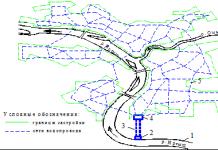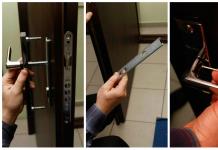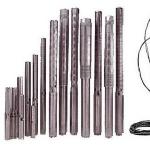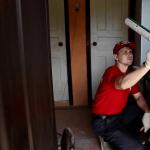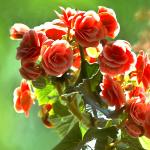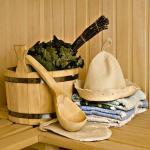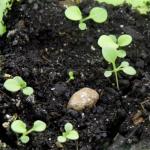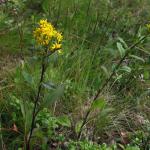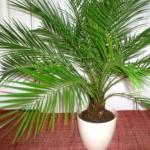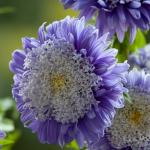The nematode is a roundworm. It is small, its size does not exceed one millimeter, but despite this, the pest is able to destroy a large number of fruits, it is distinguished by its voracity. With the help of a kind of tongs, it is attached to the roots and stems of plants, injects certain substances into them that cause chemical reactions in the plantations. Thus, the worm prepares the most suitable dish for itself.
The nematode is highly resistant to adverse weather conditions; for them, the treatment of plants with various chemicals is not dangerous. The color of the worm is white, yellowish or light brown.
What danger does the nematode carry
The key danger of such a pest is that during its reproduction it cannot be detected. After the appearance of young individuals and an increase in the population of worms, the affected soil and strawberries will provoke a deterioration in the quality of the crop. And sometimes the crop is completely absent due to the activity of nematodes.

- roots do not develop, lag behind in growth;
- leaves turn yellow, wrinkled, curled;
- leaves slow down their growth;
- berries change their usual shape, deform.
How to get rid of pests
There are other ways to eliminate pests. It is important to choose the right seedlings before planting:
- When transplanting plants, you need to choose only those bushes that previously grew in healthy soil.
- If there is damage to the root system or leaves of the berry crop, such bushes are destroyed in any convenient way.
- Before you start planting seedlings, it must be treated with Fosdrin or Parathion.
In order to properly process the bushes, they are cleaned of contaminants and dipped in the finished solution for a quarter of an hour. Then they are thoroughly washed and again lowered into water (hot). Next, the bushes are lowered for half an hour in cold water. After such manipulations, seedlings can be planted.
In order for the plants to be healthy and bear fruit well, competent care is important for them. You should regularly weed the soil from weeds around the bushes and inside. Top dressing is an important step in the care of strawberries. It is almost impossible to get rid of nematodes completely, but it is quite possible to reduce their number on the site. Then strawberries will thank you with delicious and juicy fruits.
The danger of nematodes for plants

This is the “work” that a worm does on berries
Basically, the nematode attacks single strawberry bushes. Signs of its presence are:
- Retardation in growth.
- Thickening of the veins of the leaf plates, their color change: from green to yellow.
- Withering of the apical buds.
- Single inflorescences or their absence.
- Color change (the plant turns pale, then turns yellow, blackens).
- Deformation of the leaves, especially noticeable in warm weather.
- Reduction in fruit size.
- Root damage causing stunted growth.
How to save the harvest
There are several ways to deal with strawberry nematode without the use of chemicals.

- Rinse strawberry seedlings with water before planting in the ground. Pay special attention to the roots, on which the earth from the old garden may remain. Treat the prepared plant with a saline solution: dissolve 5 tablespoons of table salt in five liters of water. It is necessary to completely immerse a clean plant and withstand a quarter of an hour. Before planting in the ground, rinse the seedlings in clean water.
- Soil should be brought to the beds without pests. In nature, nematodes can be found everywhere: in turf, coniferous and leaf litter.
- If the seedlings are healthy, they are still treated with a disinfectant solution. It is best if it is an aqueous solution of Fosdrin or Parathion.
- A composition (1%) is applied to the opening first leaves of already growing berries.
- Break strawberry beds away from growing peas, potatoes, onions. For nematodes, these are the best breeding and development cultures. In the case of another transplant of strawberry bushes, they are not planted in the soil where the listed crops grew.
- It is necessary to seat plants, keeping the deadlines. When transplanting, it is possible to return to its original place, not earlier than after 5-7 years.
- Create natural barriers around the strawberry plantation. It could be nails. The smell of the plant repels the worm.
- Dig shallow trenches. Lime is poured into them, which has a detrimental effect on nematodes.
- The release of beds from diseased plants, bushes.
- Weed control.
- Thinning bushes.
- Manure is another means of combating the strawberry nematode (periodic soil fertilization). In beds with strawberries, it promotes the development of protozoan fungi. Such an environment is detrimental to worms.
Fighting with chemicals

Attention! It is necessary to apply insecticides during the growing season 4 times with a frequency of every 3-5 days. Despite the strong impact and toxicity, a significant "minus" of such processing is neutrality in relation to eggs.
What the people say
Specific dimensions, which cannot be seen without optics, lead to the fact that the fight against the strawberry nematode by folk methods is almost never carried out. Ascertaining the defeat of crops is recorded with external manifestations on the plant, when no methods of destruction are suitable, except for the use of potent chemicals.

- And yet, you can get rid of the nematode on strawberries with its early detection by treating the extracted plant (its root) with water at a temperature not higher than 55C for 10-15 minutes. Then dip the seedlings in cold (temperature 10 ° C) water for another quarter of an hour. For preventive purposes, a fungicide is added to the cold liquid for the last time. For the root system, this temperature is not detrimental, but the nematodes laid eggs on the plant die during heat treatment. If there are a lot of seedlings, the capacity is taken with a volume of 30-40 liters. It will fit approximately 40-50 bushes.
- How to deal with a nematode on strawberries with nettles? To do this, you need to break her whole bucket. Pour boiling water over, leaving to infuse for 3 or 4 days. Strained solution, falling on strawberries and penetrating into the soil, has a detrimental effect on worms in fruits and on roots.
- Damage to plants indicates contaminated soil. Therefore, the treated plants are inspected, the damaged areas of the root are cut out, after which the bushes are transplanted to new beds. If the affected area is more than half, the culture must be destroyed: burned or buried to a sufficient depth outside the boundaries of the garden plot. In the latter case, bleach is poured onto the plant before disposal.
- Disinfect heavily contaminated soil. To do this, treat the upper layers of the soil with carbon disulfide.
- The fight against the nematode on strawberries by farmers is carried out by the pharmaceutical tablet drug Dekaris. To do this, the tablet is crushed, completely dissolved in a liter of water. Strawberries are watered about 4 times.
Using comprehensive control measures, proper watering, fertilizing, crop care, you can prevent the appearance of nematodes in the beds. At the first sign of finding a pest, immediately apply any of the listed measures to prevent mass destruction.

Photo of the nematode:
Nematode (Nematodes) is a herbivorous worm belonging to the class protostomes. Differs in voracity and resistance to external influences.
The body of the nematodes is colored yellow, there is a well-developed mouth apparatus resembling tongs. It is with his help that they attach themselves to the strawberry bush, and then begin to actively feed on the juice.
Nematodes in small numbers are almost always present in the soil, but do not pose a threat to plants. Worms begin to actively multiply only when favorable conditions occur - an increase in soil acidity, high temperatures.
When infected, single strawberry bushes are usually affected, as well as seedlings and young plants, and then the pest spreads to the entire planting. By themselves, nematodes cannot cause great harm to a large planting - single bushes are usually infected, but the worm is a carrier of fungal diseases and reduces the plant's resistance to infections.
Varieties
There are several types of nematodes, depending on which they can be found on different cultivated plants.
The most common of them:
- golden potato. Found only on plants of the Solanaceae family. A typical pest for tomatoes, potatoes and eggplants.
- Gallic, or root. It lives on the roots of plants, infection can occur on most crops.
- stem. Favorite plants of this species are garlic and onions, garden flowers, berries and potatoes.
- sheet. Found almost everywhere. Prefers low plants, tomatoes, flowers of the Aster family, strawberries.
In the climatic conditions of Russia, garden strawberries are usually affected by stem and leaf nematodes.
Signs of pest damage

To diagnose infection, you should use a microscope or dig a bush, carefully examine the roots - they form white growths a little larger than a poppy seed.
Typical signs of strawberry infection with a nematode:
- plant growth slows down or stops;
- leaves and ovaries are deformed;
- the leaves curl up, small swellings form on their inner side;
- petioles are shortened in size;
- vegetative parts turn pale, then turn yellow;
- berries develop small, sour in taste.
When infected with a nematode, the plant's immunity is reduced, so concomitant infection with a fungal or bacterial infection often occurs.
How to fight? Methods

It is not always easy to get rid of the nematode on the site, since the pest has a strong survivability and multiplies rapidly. For the treatment of strawberries and strawberries from nematodes, it is advisable to use an integrated approach - to use several methods of struggle at once.
Agronomic
These are the easiest ways to avoid nematode strawberry bushes. Agrotechnical methods of pest control:
- in autumn and spring, after harvesting, you need to dig deep into the soil, remove all weeds, plant debris and parts of the roots;
- observe the top dressing regime, avoid oversaturation and depletion of the soil with minerals;
- maintain a neutral pH of the substrate;
- use high-quality planting material;
- observe crop rotation, do not plant one crop in the garden for more than 3 years in a row;
- choose resistant varieties of strawberries.
It is advisable to dig a bed for planting strawberries to a depth of 1.5-2 bayonets of a shovel. Every 3-5 years, it is desirable to renew the soil, and then disinfect it, for example, using a 1% solution of potassium permanganate.
Mechanical
The most common mechanical folk way to deal with nematodes is to treat the roots with boiling water. The method is effective only in the early stages of infection, when there is no significant damage to the bush.
Work algorithm:
- Carefully dig up the bush along with a clod of earth. Rinse off soil with water.
- Immerse the roots of the plant in a container with water heated to a temperature of 45-55 ° C, leave for 15-20 minutes.
- Plant the plant in a new place, it is advisable to add a growth stimulator solution for quick adaptation of the bush.
The hole where the infection occurred must be treated with a chemical preparation; for the next season, it is advisable to plant only resistant crops in this place.
Chemical
Traditional insecticides for the treatment and prevention of most pests are not able to cope with nematodes, since worms have a specific anatomical structure. To combat them, special preparations are used - nematocides.
The most effective of them:
- Nemakour (Fenamithos);
- Karbofos;
- Heterophos;
- Lindane;
- Nemagon;
- Phosphamide.
The agent must be applied in accordance with the dosage indicated on the package, since it is different for each drug. Treatment with nematicides is carried out 10-40 days before sowing or planting strawberries in the ground, depending on the toxicity of the agent. These substances are strong toxins, so you should follow the safety rules during work, properly store and transport drugs.
Biological
This is more of a preventive measure than an active treatment.
The mechanism of the biological method is based on the fact that the worm does not tolerate the smell of some plants, therefore, to prevent infection, the following crops can be planted next to strawberries:
- marigold;
- nasturtium;
- white mustard;
- rudbeckia;
- gaillardia;
- calendula.
For 6-8 strawberry bushes, you can plant 1-2 useful flowers. At the same time, it is important to take into account that it is necessary to slightly increase the volume of watering so that all plants have enough minerals and moisture in the soil.
In addition, the biological control method also includes the creation of beneficial microflora in the area, which reduces the risk of contracting fungal infections, since they are often a companion of nematodes. For this purpose, during digging, compost should be added at the rate of 3-4 kg / m 2.
Folk
There are a large number of folk methods for treating strawberry infection with nematodes. They have poor efficiency, but they can be used at any stage of the growing season, unlike chemicals.
Popular folk methods:
- Infusion of marigolds. To prepare the product, pour 5 kg of marigold leaves or flowers into 5 liters of water, leave in a dark place for 2 days. Strain the resulting mixture and spray the entire planting, pour the soil;
- Infusion of calendula. In 2.5 liters of warm water, add 5 tbsp. l. dried flowers of calendula officinalis. Leave the product to infuse in a dark room for 1 day. Apply for irrigation for 7 days, then a month later carry out preventive spraying;
- Onion infusion. Pour 200 g of chopped onion-batun into 5 liters of water, mix thoroughly and let it brew for 2-3 hours. Water the strawberry bushes, repeat the procedure in a week;
- Nasturtium infusion. In 5 liters of warm water, add 300 g of dry leaves of the plant, let it brew for 24 hours. Strain and irrigate for 7 days.
In addition, hogweed infusion is also used to combat the nematode, but the plant is poisonous to humans, so it is not recommended to use it if there are alternative options.
Preventive measures

Infection with nematodes on strawberries is much easier to avoid than to carry out a long and not always effective treatment.
- use only high-quality planting material, check the appearance of plants;
- no later than 10 days before planting, treat the soil with nematicides;
- treat seedlings with hot water before planting;
- carefully inspect the bushes, remove all affected parts of plants;
- observe the regime and volume of fertilizing, trying not to oversaturate the soil with nitrogen;
- in the fall, remove all plant residues, roots;
- observe crop rotation, planting technology;
- plant flowers around the perimeter of the beds and between rows that repel nematodes.
If infected plants are found, they must be burned, and not thrown into the compost pit. This can lead to further spread of pests and infections in the area.
Pest resistant varieties
Today, strawberry varieties have been bred that are resistant to infection with nematodes and diseases typical of this crop. They are recommended for growing.
The most resistant varieties:
- Saxon;
- Festival;
- Slavutych;
- Rocket;
- Dessert;
- Pearl;
- Early Maherauha;
- Granddaughter.
Miniature worms attach to the roots and stems of strawberries, damage tissues by sucking out the juice, and in return release substances harmful to the plant. Nematodes are divided into female and male. Males look like a yellowish thin thread 2 cm long, females are shorter and thicker because they carry thousands of eggs. In the article we will tell you why a nematode appears on strawberries, how to deal with it with folk and chemical methods.
Symptoms of damage and the causes of the appearance of a nematode on strawberries
The complexity of diagnosis lies in the fact that the microscopic worm cannot be detected at an early stage. Often the external signs of damage resemble a lack of nutrients:
- The growth of bushes slows down;
- The ovary and fruits are deformed;
- The leaves noticeably decrease and curl up, swellings appear on the upper surface - galls;
- Petioles thicken and shorten.
External signs of the disease appear during flowering and fruiting. In this case, the pest cannot be detected.
You can see the nematode under a microscope, the worm is transparent. Finding a nematode is very difficult. It not only sticks to the plant, but damaging the tissues, it infects. Most often, these are the causative agents of fungal diseases. Thus, the pest infects strawberries.
Nematodes are found in any soil, but are dangerous when concentrated in one place. This can explain the defeat of only a few strawberry bushes, which creates bald spots in the plantations. Continuous drying out is rare when the number of nematodes exceeds 1 thousand pieces per 1 sq. cm.
Worm eggs can remain viable for many years, and under favorable conditions become more active. Particularly intensive growth is observed on moderately moist, acidic soils pH - 5.5 - 5.8, at a temperature of + 24 0 - + 30 0. Most often, nematodes appear along with infected seedlings.
Tip #1 When buying strawberry seedlings, it is important not only to evaluate the appearance of the bush, but also to carefully examine the roots.
Even if no external signs of damage are found, before planting, measures must be taken against the spread of the pest. Carefully inspect the roots. They should not have suspicious points, inclusions of raids. For prevention, pour hot water over the roots. ".

Before planting, carefully inspect the bushes and roots of strawberries.
Preventive measures and plants - neighbors that repel the nematode
They begin long before landing and during it.
- The choice of planting material must be taken responsibly so that with it you do not get such a “headache” as a nematode. Most often, this "nuisance" lives in spontaneous markets.
- Before planting, add compost to the soil. It contains active fungal forms that destroy nematodes. Such top dressing should be repeated systematically.
- Treat the roots of seedlings with a 0.5% aqueous solution of Fosdrin or Parathion, into which the plant is lowered for 20-30 minutes.
- The agent must be thoroughly washed off and placed in hot water + 48 0 - + 52 0, no more, otherwise the plant will boil. It takes 5 minutes to process.
- Prepared bushes are planted in a permanent place.
Prevents the spread of the nematode by moving the culture around the site. You need to change the place every 4 - 5 years. They help fight plant pests with a specific odor that repels nematodes:
- Marigolds are rejected, it is better to plant fragrant varieties, weakly smelling hybrids do not give an effect;
- Nasturtium is large and calendula officinalis with its roots releases substances that drive away the pest.
- Herbaceous perennials - beautiful gaillardia, hairy rudbeckia, coreopsis Drumonda can be placed around the perimeter of a strawberry planting.
- The neighborhood with legumes is undesirable - beans, for which the stem nematode is dangerous, and peas, susceptible to infection by the stem pest species.
- Do not plant strawberries next to tomatoes, potatoes, cabbage, carrots, celery. ".

Marigolds are not only planted between the rows of strawberries, but are used to prepare infusions against nematodes.
Strawberry varieties resistant to nematodes
There are no hybrids that are resistant only to nematodes. Breeders have bred many varieties of strawberries with powerful immunity to diseases and pests that resist, including nematodes. List of resistant varieties:
- Saxon,
- festival,
- Dessert,
- Rocket,
- Granddaughter,
- Pearl.
A set of measures in the fight against nematodes
It is problematic to fight nematodes, a successful result can be achieved by applying a complex of agronomic, biological, mechanical and chemical measures.

If you look closely, you can find light yellow grains on the roots. This is a female nematode. Its size does not exceed a grain of sand.
Advice #2 . Note! Green siderats plowed into the soil give good results: green radish, oily mustard, white mustard.
Chemicals against the nematode
Substances from worm-like pests belong to the group of nematicides. Such drugs are popular:
- Mercaptophos;
- Lindane (otherwise, ruskamin);
- Phosfamtide The listed funds are used in the form of a 0.02% solution, the frequency of treatments is every 3-5 days.
- Heterophos 15 g is dissolved in 10 liters at a temperature of + 20 0. It is used not only for processing plantings, but also for soaking seedlings. Highly toxic! Work only in a respirator, rubber gloves, tight clothing! Earthwork can be carried out after 45 days.
Treatment plan for strawberries from nematodes
Having found signs of the disease, proceed to the following set of measures:
| Terms of work | Measure characteristic |
| Spring | 1. An audit of the state of strawberry plantings is carried out weekly from spring to autumn. |
| spring | 2. Application of organic, potassium-containing fertilizers, such as wood ash. ". |
| During the growing season | 3. Application of EM (effective microorganisms). 4. Treatment of strawberries with growth stimulants to maintain immunity, for example, Epin. |
| If necessary | 5. The affected bushes are dug up and doused with hot water. |
| After harvest | 6. Use of chemicals. |
| autumn | 7. Audit strawberries. Affected plants are removed and burned. |
| 8. Fertilize with phosphorus - potash fertilizers. |

"Epin - extra" is a unique growth stimulant that not only activates the development of the plant, but also increases immunity, which allows the plant to independently protect itself from diseases and pests, including nematodes.
Rubric "Questions and answers"
Question number 1. How long does it take to get rid of nematodes on strawberries?
Unfortunately, it is impossible to completely eliminate the nematode, but it is realistic to reduce the number to a safe amount. Why prevention and pest control must be carried out constantly.
Question #2. Are nematodes dangerous for humans and pets?
No. The structure of the worms and the nutritional needs are designed exclusively for vegetable juices.
Question #3. If strawberries are planted under agrofibre, will it save from nematodes?
It will not be possible to completely get rid of the worm, but it will be possible to reduce the number and secure the strawberries. Spunbond creates conditions of high humidity, uncomfortable for worms, which does not contribute to their spread.
Question #4. Which drug is guaranteed to destroy nematodes?
Unfortunately, such a tool has not yet been created. Substances that destroy worms belong to the group of nematicides. The difficulty is that most of them act on adults and damage eggs. Those, in turn, can wait for favorable conditions for years. That is why it is necessary to carry out preventive measures and make sure that the number of pests does not increase.
Question #5. How to determine when buying whether there are nematodes on strawberries?
When purchasing seedlings, you need to carefully examine the roots and stems, especially those that are sold in pots with a lump. There should not be small whitish grains similar to semolina, this is how females filled with numerous eggs look like.
Mistakes in the fight against the nematode
- The use of insecticides, drugs not intended for the destruction of nematodes. Such treatments act on pests - insects, but not on worms.
- Some gardeners throw the affected plants into the compost, they say, they will rot. Nematodes are not afraid of this process. They retain the ability to reproduce for many years, waiting for favorable conditions, while infecting the fertilizers in which they are located.
- Many are not alarmed by the unattractive appearance of several bushes affected by the nematode. The danger is that a colony of worms that has attacked one or more bushes will not leave them alone until it has sucked out all the juices, only after that it moves to fresh prey. You should not wait for a mass infection, it is better to destroy diseased bushes immediately.
Often gardeners can see worm-like pests eating strawberries. In fact, these are not worms, not wireworms and not caterpillars, but nods. This is the common name for centipedes, which have two pairs of legs on each body segment (with the exception of the four front and back). They are distributed almost everywhere. Their body length varies from 3 mm to 28 cm (in tropical species). They live in the soil, adhering to layers with a moderate level of moisture. Almost everyone feeds on diseased, damaged, dead or rotting parts of plants in the upper layers of the soil, as well as fallen fruits and berries lying on the ground. But with a strong lack of moisture in the soil or mass reproduction (every 3-4 years), they can feed on green succulent tissues of plants and cause serious damage, since they can eat 1.5 times their weight per day. When disturbed, they first coil up like a snail shell. If you disturb them further, they begin to sharply bend the ends of the body in opposite directions, “convulsing”.
In our country, berries (garden strawberries) are most often damaged by spotted or speckled kivsyak (Blaniulus guttulatus). Depending on the phase of development and the age of the adult nodule, the color of its body is different: light brown, spotted, even black. Kivsyak speckled by the end of life, and he lives for several years, reaches 5 cm in length and even more. It is active at night, hides in shelters during the day, but on cloudy days, in shady places and in wet weather, it comes to the surface during the day. Reproduction occurs at a temperature of +22...+28 °C and 85% humidity. In the soil, from a mixture of earth and excrement, the female builds a domed nest, where she lays up to 70 eggs. Sometimes the eggs are laid in clusters in the ground, under rocks and other objects on the surface of the soil. After 2 - 4 weeks, larvae emerge from them - reduced copies of adult nods. Their full development can last up to 3 years. Periodically, the larvae molt, after each molt their body increases by one segment. In dry weather, kivsyaks climb under, tiles, boards, heaps of garbage, tops, creeping grass and other objects, under which moisture remains longer than in open areas. When the top layer of the soil dries up, they go into the ground. Both larvae and adults overwinter in the soil.

Signs of damage to plants by nodule and damage
Signs of damage are not specific. Kivsyaki gnaw holes of various depths in the berry. But often inside the hole you can find a larva of a nodule or even several larvae intertwined in a ball.
Damaged berries acquire an unpleasant odor, they cannot be used for food. In a cold and wet spring, kivsyaki can damage the root system and the underground part of the stems of many crops, gnawing small cavities in them. The affected areas turn brown or black. The development of plants slows down, and with severe damage, they dry out and die. In cases where nodules are present in the soil together with wood lice and two-tailed, the damage to cultivated plants is most serious.
Risk group
In the diet of kivsyakov, root crops:,. And also (carrion), overripe, and strawberries or touching the soil. Germinating seeds, tomatoes, melons, stems and roots of any seedling. Kivsyaki also eat cucumber fruits lying on the ground, leaves, champignons (and others), as well as decorative potted crops in closed ground.

How to deal with worms on strawberries
- Deep plowing in the morning frost in late autumn (nods are thermophilic and die at low temperatures).
- and timely cleaning of plant residues.
- Putting things in order: there should not be scraps of boards, slabs, pieces of slate, etc. lying unattended on the ground on the site.
- to reduce surface moisture.
- In spring, young strawberry leaves can be isolated from the soil surface with a layer of straw or shavings (mulch). You can also isolate the berries using props for flower stalks.
- Manual collection of adult nods and their larvae late in the evening, early in the morning and on cloudy days.
- Before the ripening of strawberries, you should start using pieces of potatoes or carrots as bait, spread out over the area with timely periodic collection and destruction of nodule.
- During the ripening period of the berries, it is impossible to overmoisten the soil under the strawberry bushes.
- Affected berries, when detected, must be removed immediately.
- It is important to harvest berries in a timely and complete manner.
Attention! When touched, kivsyaki often secrete a pungent secret that has a specific odor and stains the hands in a red or brown-violet color. Sometimes this secret causes an allergic reaction, so gloves are recommended.

Using traps
The construction of artificial shelters from improvised material: pieces of boards or old roofing felt, wet rags, etc. under which kivsyaki gather, with the subsequent revision of shelters and the destruction of pests under them.
You can also use food baits - spread pieces of carrots, potatoes, apples over the area, followed by collecting and destroying the nodule.
You can dig trapping grooves up to 10 cm deep and up to 6 - 7 cm wide, at the bottom of which mayonnaise cans are dug in at a distance of 2 - 3 m.
In autumn, you can dig holes 30 x 30 cm in size and 30 - 40 cm deep, put leaves, slices of potatoes, carrots and vegetable waste in them, sprinkle with a layer of earth 5 - 10 cm. Mark the holes with branches so that they can be easily found. With the onset of frost, select the contents of the pits and burn them together with the nodule at the stake, or simply scatter them around the site - all pests that have gathered for the winter will die.
Repelling kivsyaks with superphosphate, soap-kerosene emulsion, as well as the use of molluscicides against them ( Thunderstorm, Slug Eater) is ineffective, since the surface of the body of the kivsyakov is protected by a thick layer of chitin. These funds can only cause minor harm to recently molted larvae, the chitin layer of which has not yet reached the required size.

Measures for the active fight against nodule
At the moment, the list of pesticides and agrochemicals approved for use on the territory of the Russian Federation does not contain recommended preparations for protecting plants from nodule. This is explained by the fact that the plots are treated with pesticides during the daytime, when a significant part of the nodule is located in shelters, and does not fall under the treatment. Even the introduction of preparations aimed at the destruction of root pests of plants (,) does not give a noticeable result in the fight against nodule.
